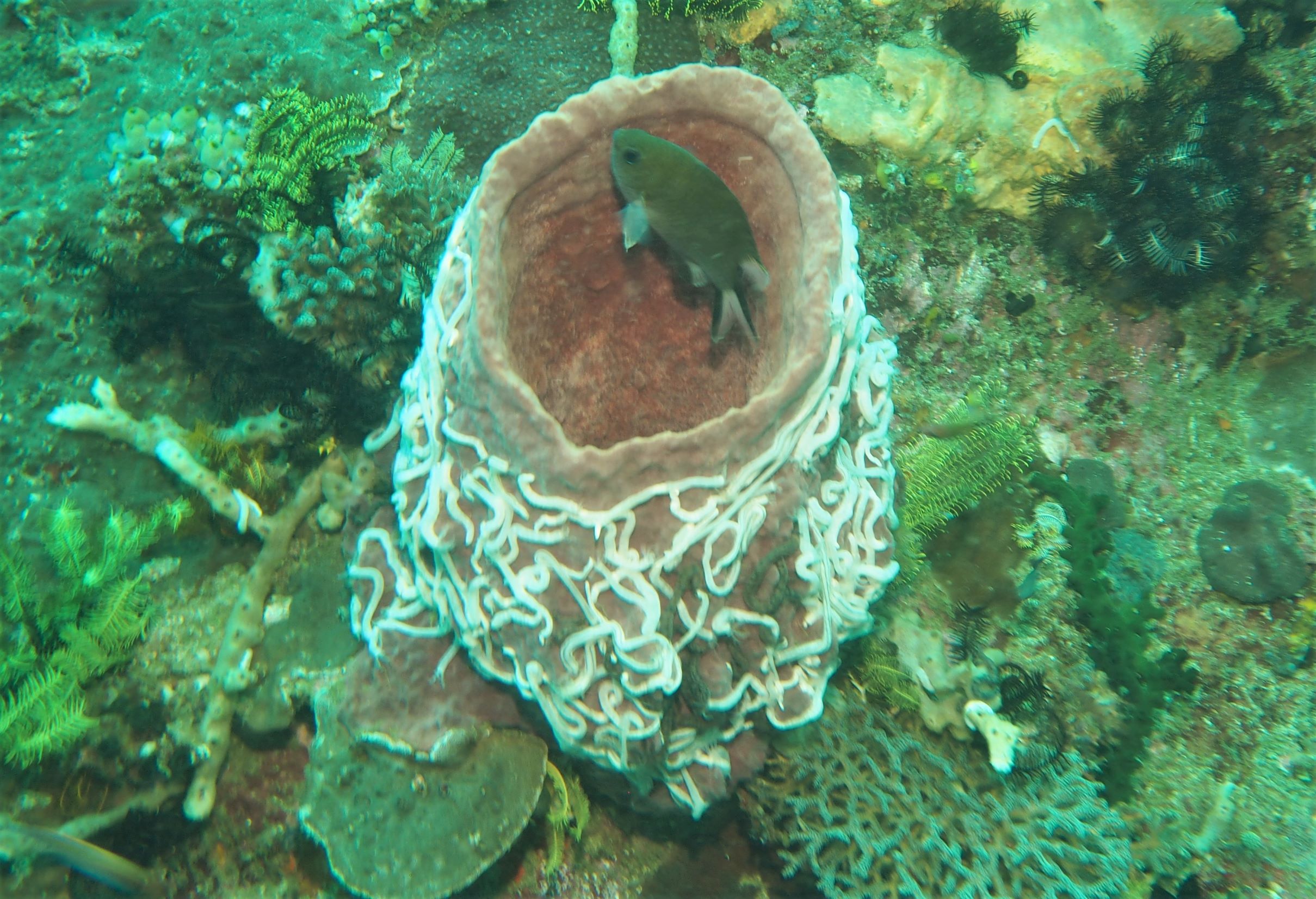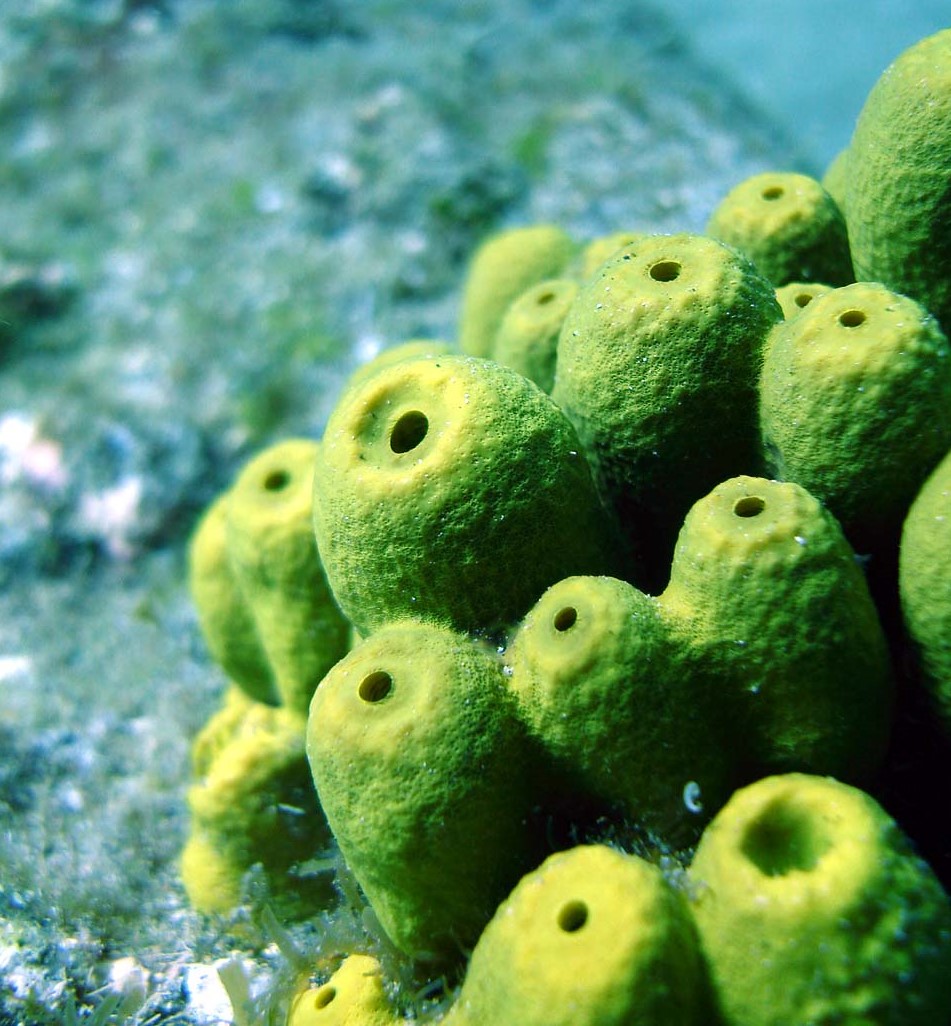- Tracking environmental DNA (eDNA) is fast becoming a popular method of monitoring aquatic biodiversity, but current methods are expensive and cumbersome.
- Filter-feeding sponges can act as natural sieves to collect and concentrate eDNA from seawater.
- Using sponge samples collected from the Antarctic and the Mediterranean Sea, researchers identified 31 organisms, including fish, penguins, and seals, clearly separated by location.
- Although the method is still a proof of concept, it may lead to the development of simpler, less expensive technologies for aquatic eDNA collection.
Feeding aquatic sponges could provide biologists with unexpected underwater data collection assistance. Sponges (phylum Porifera) are immobile aquatic animals that eat by filtering out food particles from the water around them. During this process, a research team has discovered, the sponges also trap DNA shed by other animals in the area.
According to a new study, analyzing this DNA can reveal the variety of creatures that share the space with the sponges. Incorporating sponges’ natural filtering process may prove to be a simple and efficient method of monitoring the aquatic animals present in an area.

Scientists monitor aquatic life to help assess the health of ecosystems and develop suitable conservation strategies. One monitoring method that has recently become popular is sampling and analyzing the environment for the presence of animal rather than looking for the organisms themselves.
All animals leave behind bits of themselves, including dead skin, hair, scales, and feces, collectively called environmental DNA, or eDNA. This DNA can be then be rapidly analyzed and sequenced to identify the organism. Researchers have applied eDNA analysis to many applications, including combating wildlife trafficking, early detection of the fatal fungal pathogen killing frogs worldwide, and surveying coral populations.
To track aquatic organisms, researchers sample eDNA either from sediments or from the water column. Traditionally, they collect samples during underwater surveys by robots or human divers. However, the equipment needed for the surveys is usually expensive, the process tedious, and sample collection may inadvertently disturb habitats, especially in fragile ecosystems. In addition, they require collecting and filtering large quantities of water to obtain sufficient DNA, creating more issues like storing the water and preventing contamination.
Sponging up eDNA
A team of scientists led by Stefano Mariani, a marine ecologist at the University of Salford in the UK, figured out an easier way to assess the aquatic community using sponges.

“Sponges are the ultimate natural filters,” Mariani told Mongabay. “No other type of organism is able to filter so much water in such a non-selective way.” Sponges can filter up to about 10,000 liters (about 2,640 gallons) of water in a day, roughly 1,000 times more than other techniques used today. Hence, the team hypothesized that by isolating DNA from sponge samples and sequencing them, they should be able to determine which organisms roamed near those sponges.
The researchers used five sponge samples from the Antarctic seas and four samples from the Mediterranean Sea, collected for other purposes, to extract DNA. They subjected the DNA to a process called metabarcoding, which can separate out DNA belonging to different species from the DNA “soup” extracted from the sponges. Through rapid sequencing of these discrete groups of DNA can lead to the identification of particular species.

In the study, the team identified DNA from 31 different organisms, including a Mediterranean rock goby, Antarctic rock cod, chinstrap penguin, and Weddell seal. The Antarctic samples also showed presence of sea stars. The researchers said that finding seals and penguins was particularly interesting because it suggested that the method could also be used to monitor aquatic mammals and birds, as well as fishes. Additionally, identification of separate sets of animals unique to each setting meant that the method could be used to assess biodiversity in different locations.
One concern with using sponges for sampling was that the presence of sponge DNA might interfere with identification of the eDNA. The researchers avoided this problem by using a DNA primer—a short strand of DNA used in DNA analysis that attaches only to its analog in the sample—that was specific to vertebrates. Thus, the analysis amplified only the eDNA and not the DNA from the sponge itself.
Natural eDNA samplers could be the future
The idea of using natural organisms to help monitor biodiversity is not new. In the past, scientists have extracted DNA from blood-sucking leeches, as remnants of their last meals survive for quite some time in their bodies. This technique helped researchers discover new and rare mammalian species in the Vietnamese rainforest. Another team of researchers analyzed the eDNA from the stomach contents of shrimps from different parts of Europe to determine the aquatic species found in those regions.

Sponges, according to Mariani, may be particularly good eDNA sources. “Sponges are ideal sampling units because you find them everywhere and in every aquatic habitat, including freshwater,” he said in a press release. “Also, they’re not very selective filter-feeders, they don’t run away, and they don’t get hurt by sampling – you can just grab a piece, and they will regenerate nicely.” Sponges are also found in freshwater, so they can be used there as well.
Another advantage of the method is that the sieving of water by sponges can concentrate any eDNA present, although the team has not compared this to any of the current water sampling methods. “But concentrating DNA is a good thing if you hope to retrieve traces of rare species,” said Mariani.
Mariani told Mongabay he thinks the technique could potentially be extended to employing other filter-feeding species, such bivalves, krill, and some types of fish. He also suggested testing other filter-feeding animals, such as jellyfish or salps (a type of tunicate), that live in open waters, where sponges are generally rare or hard to reach. He added that the idea might also be used for collecting eDNA from soil, for which plants such as grasses could act as DNA traps.

Although the study is still a proof of concept, the authors believe that with further research and optimization, the approach may lead to simpler, less expensive methods of collecting eDNA, which can help streamline biodiversity monitoring, lower its environmental footprint, and help conservation efforts.
Citation
Mariani, S., Baillie, C., Colosimo, G., & Riesgo, A. (2019). Sponges as natural environmental DNA samplers. Current Biology, 29(11), R401-R402. http://dx.doi.org/10.1016/j.cub.2019.04.031
FEEDBACK: Use this form to send a message to the editor of this post. If you want to post a public comment, you can do that at the bottom of the page.